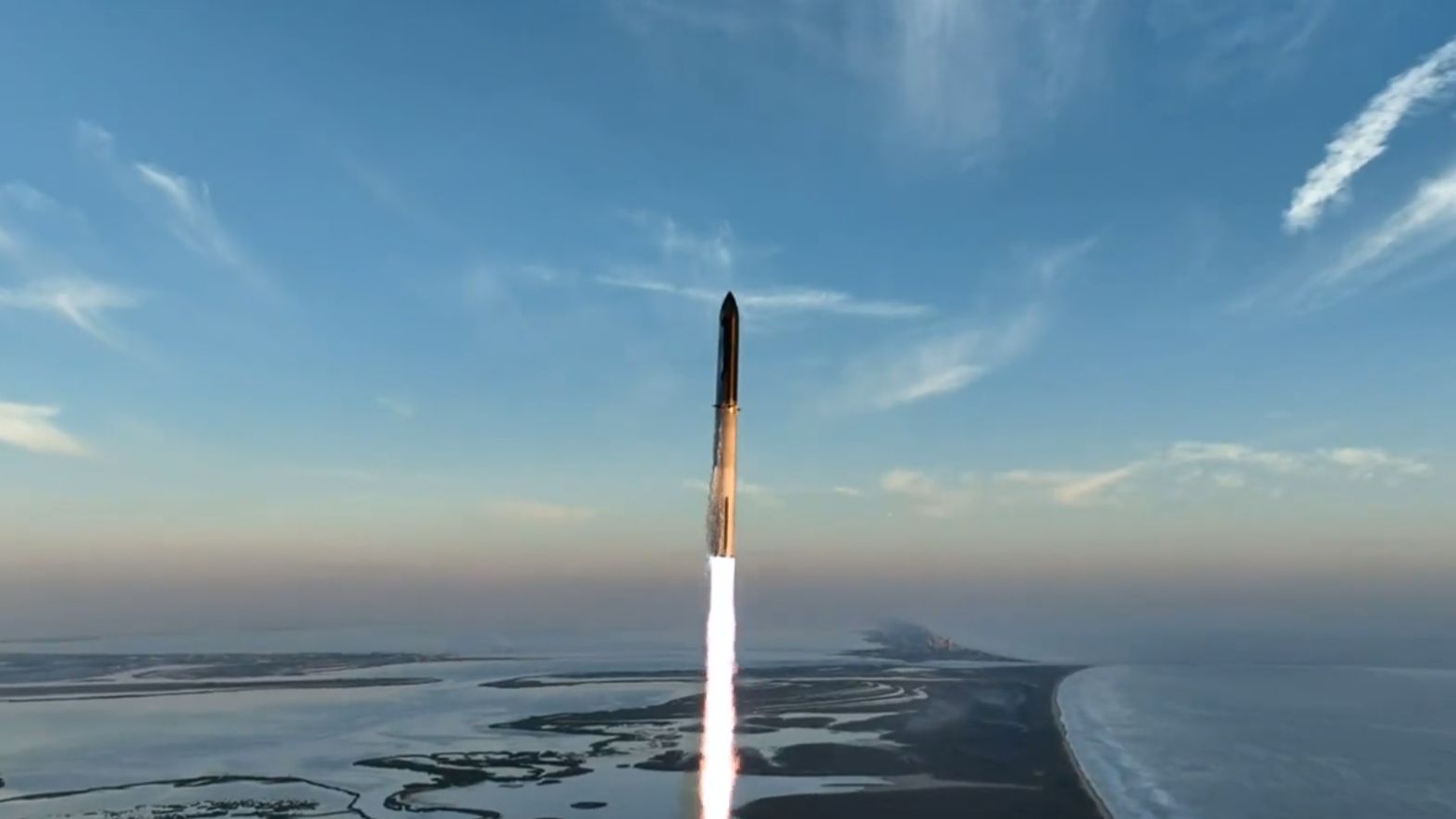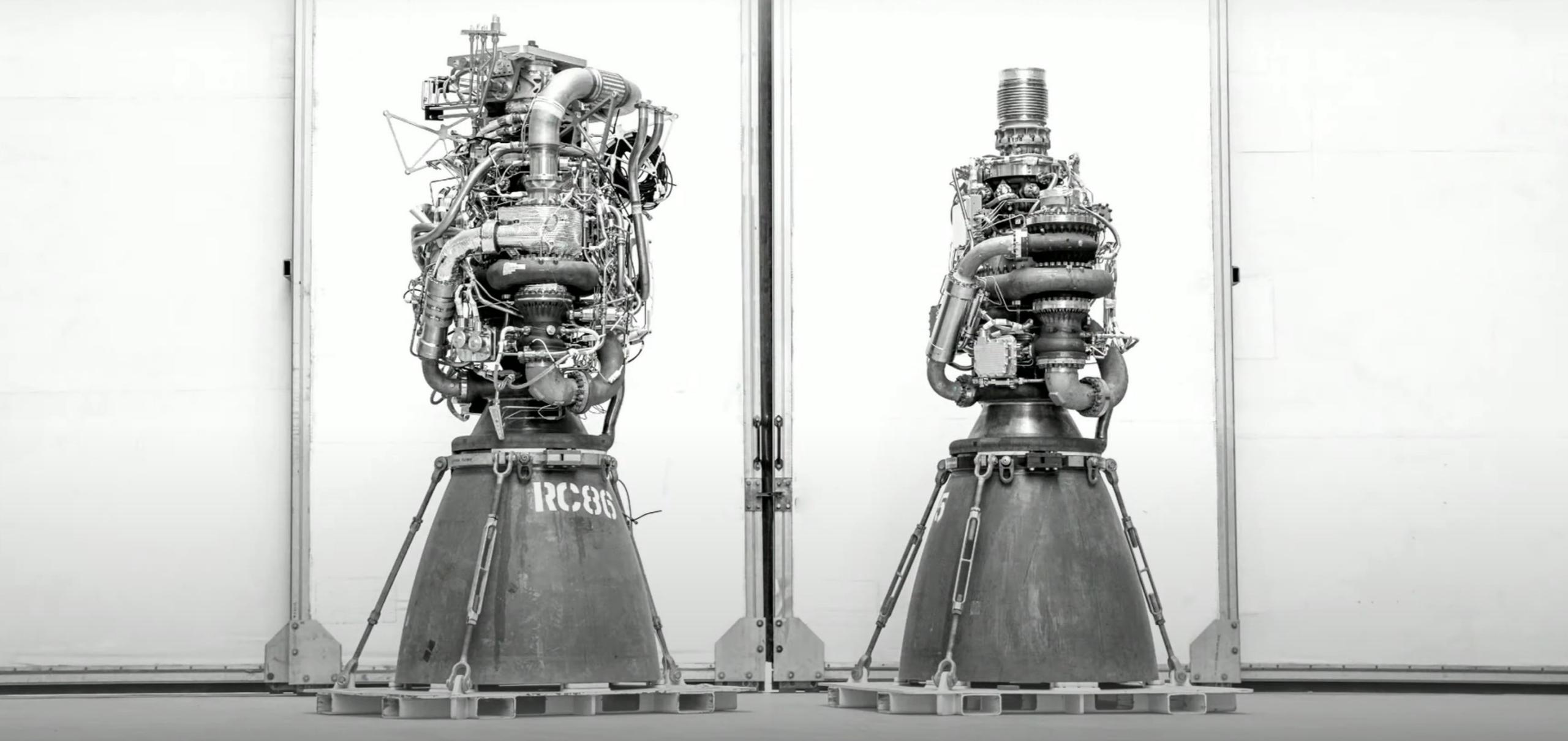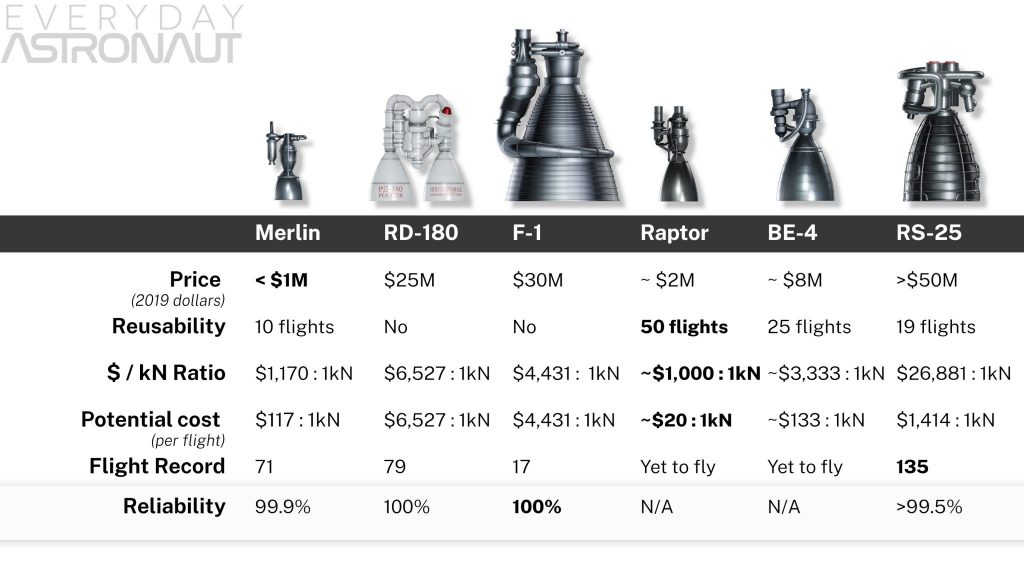Great band nameSilurian Extinction Event
-
Please take a moment and update your account profile. If you have an updated account profile with basic information on why you are on Air Warriors it will help other people respond to your posts. How do you update your profile you ask?
Go here:
Edit Account Details and Profile
You are using an out of date browser. It may not display this or other websites correctly.
You should upgrade or use an alternative browser.
You should upgrade or use an alternative browser.
The Perpetual MEGA Space Thread
- Thread starter OscarMyers
- Start date
SpaceX’s launch exploded again today, although this time they made it beyond 1st stage separation. Interesting that the Super Heavy booster has 33 rocket motors while the Saturn V first stage only had 5 motors.

 www.space.com
www.space.com

SpaceX Starship megarocket launches on 2nd-ever test flight, explodes in 'rapid unscheduled disassembly' (video)
It was the second explosive moment for the biggest rocket ever built, but SpaceX hailed it as a success.
This was expected by many. This launch, SpaceX got loads of additional data, so their next launch may explode as well, but make it significantly further. This launch itself was improved by data from the first launch.SpaceX’s launch exploded again today, although this time they made it beyond 1st stage separation. Interesting that the Super Heavy booster has 33 rocket motors while the Saturn V first stage only had 5 motors.

SpaceX Starship megarocket launches on 2nd-ever test flight, explodes in 'rapid unscheduled disassembly' (video)
It was the second explosive moment for the biggest rocket ever built, but SpaceX hailed it as a success.www.space.com
Regarding the Super Heavy, from what I've read, it uses lots of smaller rocket engines because it is easier and ultimately cheaper to build a lot of simple, small engines than to build smaller numbers of large, complex engines. Smaller engines can be moved around by forklifts and installed quickly, and are also easier to control during flight. They also are easier to test before installation. And if one or two out of thirty-three fail while in flight, it is a lot less an issue than one or two out of five. However, the control of them in flight is also possible due to 21st century computer and sensor technologies, whereas when the Saturn V was built, it would have been much more difficult to control so many engines. It was simpler to use a smaller number of powerful large engines. Remember, Saturn V first flew in 1967.
Until the catastrophically failing engine takes out some adjacent ones.And if one or two out of thirty-three fail while in flight, it is a lot less an issue than one or two out of five.
Not saying it’s not a good approach, but I remember the P3 that threw a prop off one engine that took out the rest.
VP-47 P3 Ditching!
VPNAVY is dedicated to the men and women of the United States Navy flying ASW VP/VPB Patrol Aircraft past and present. VPNAVY has attempted to collect every available piece of information via the InterNet. Everything and anything relating to U. S. Navy ASW Patrol Squadrons is posted with...
www.vpnavy.org
This was expected by many. This launch, SpaceX got loads of additional data, so their next launch may explode as well, but make it significantly further. This launch itself was improved by data from the first launch.
Regarding the Super Heavy, from what I've read, it uses lots of smaller rocket engines because it is easier and ultimately cheaper to build a lot of simple, small engines than to build smaller numbers of large, complex engines. Smaller engines can be moved around by forklifts and installed quickly, and are also easier to control during flight. They also are easier to test before installation. And if one or two out of thirty-three fail while in flight, it is a lot less an issue than one or two out of five. However, the control of them in flight is also possible due to 21st century computer and sensor technologies, whereas when the Saturn V was built, it would have been much more difficult to control so many engines. It was simpler to use a smaller number of powerful large engines. Remember, Saturn V first flew in 1967.
Right. And the Saturn V didn't have two catastrophic failures either.
Starship is O for 2 so far. Not a good look for a rocket that is supposed to be certified to carry people.
The Raptor engines used are fairly simple, unimpressive engines by the standards of rocket engineering. So they are fairly reliable.Until the catastrophically failing engine takes out some adjacent ones.
Not saying it’s not a good approach, but I remember the P3 that threw a prop off one engine that took out the rest.
VP-47 P3 Ditching!
VPNAVY is dedicated to the men and women of the United States Navy flying ASW VP/VPB Patrol Aircraft past and present. VPNAVY has attempted to collect every available piece of information via the InterNet. Everything and anything relating to U. S. Navy ASW Patrol Squadrons is posted with...www.vpnavy.org
Not really. And I don't think the two are comparable. Saturn V was an immensely costly undertaking and the rockets extraordinarily costly. Yes none blew up, but the issue is if it blows up when the rocket is supposed to be safe, not during the development phase.Right. And the Saturn V didn't have two catastrophic failures either.
Starship is O for 2 so far. Not a good look for a rocket that is supposed to be certified to carry people.
Blowing up rockets is part of the development process of SpaceX. That is one of the major ways they've revolutionized space technology. Before, a company would spend a loooooong time seeking to make sure everything was perfect before launching, and then if a blow up occurred, it was a major embarrassment and then an even longer time until launching again. Whereas with SpaceX, they do not view an explosion in the development phase as an embarassment. They try to make sure the rocket is launchable, but also realize that the best way to learn is to actually launch the thing, collect data, if it blows up, launch again but with improvements made to avoid the original problems, collect data again, if an explosion occurs again, repeat the process. The important point is that you make actual progress in the development. That is how they find out what works and what to fix.
They had to destroy multiple rockets to work out how to land them vertically as well.
Not really. And I don't think the two are comparable. Saturn V was an immensely costly undertaking and the rockets extraordinarily costly. Yes none blew up, but the issue is if it blows up when the rocket is supposed to be safe, not during the development phase.
Blowing up rockets is part of the development process of SpaceX. That is one of the major ways they've revolutionized space technology. Before, a company would spend a loooooong time seeking to make sure everything was perfect before launching, and then if a blow up occurred, it was a major embarrassment and then an even longer time until launching again. Whereas with SpaceX, they do not view an explosion in the development phase as an embarassment. They try to make sure the rocket is launchable, but also realize that the best way to learn is to actually launch the thing, collect data, if it blows up, launch again but with improvements made to avoid the original problems, collect data again, if an explosion occurs again, repeat the process. The important point is that you make actual progress in the development. That is how they find out what works and what to fix.
They had to destroy multiple rockets to work out how to land them vertically as well.
Blowing up rockets is not revolutionary. It's failure, it always has been. They're 0-2 with starship. You don't launch without a plan to land, and you don't launch with the intent to blow up just to see what happens. That's not revolutionary, that's dumb.
No one else is saying this is a win other than SpaceX and their fanboys.
How is it failure or dumb if they are continually learning and making improvements to the design each time? Also, they didn't launch without a plan to land. They were hoping to land the rocket. Nor do they launch with the intent to blow up "just to see what happens," they launch with the understanding that such a design may well blow up and if so, they will learn from it, but they try to ensure such a thing doesn't happen from the get-go.Blowing up rockets is not revolutionary. It's failure, it always has been. They're 0-2 with starship. You don't launch without a plan to land, and you don't launch with the intent to blow up just to see what happens. That's not revolutionary, that's dumb.
No one else is saying this is a win other than SpaceX and their fanboys.
They have had great success with their other rockets thus far, so why not eventually this one? I mean for being supposedly dumb, they are light years ahead of everyone else right now.
From an article…Raptor uses a full flow staged combustion engine cycle, which comes with higher complexity.The Raptor engines used are fairly simple, unimpressive engines by the standards of rocket engineering. So they are fairly reliable.
I like the SpaceX approach, in general. At a minimum, it is just different. The landings are an insane innovation.
Last edited:
They are not small. The rocket is just HUGE. From another article…it uses lots of smaller rocket engines…
The Raptor engine is a beast. Each one can produce a half-million pounds of thrust, about the same as one of the main engines on NASA's retired space shuttle or the Space Launch System rocket.
Blowing up rockets is not revolutionary. It's failure, it always has been. They're 0-2 with starship. You don't launch without a plan to land, and you don't launch with the intent to blow up just to see what happens. That's not revolutionary, that's dumb.
NASA blew up a lot of rockets before Shepard went up. Despite what the movie shows, a lot of those tests had expectations of destruction but weren't viewed as a failure.
All that said, once they got the hang of it, it really is amazing what they accomplished with the Saturn V, given the technology level at the time.
Whoops, yes I mixed up the Raptor engines with the Merlin engines, which from what I understand are a fairly simple design. The Raptor is much more complex as its the first full flow staged combustion cycle engine to ever really be used. However, the current Raptor 2 is significantly less complex than the Raptor 1. If you look at a pictorial comparison between them, the difference is striking:From an article…Raptor uses a full flow staged combustion engine cycle, which comes with higher complexity.
I like the SpaceX approach, in general. At a minimum, it is just different. The landings are an insane innovation.

Regarding size, the Raptor engines are very powerful yes, but a lot smaller than the RS-25 engines of the Space Shuttle and SLS. And much smaller than the Saturn V's F-1:

Last edited:
I know SpaceX likes to cheerlead their fly-fail-fix-fly development model and since they‘re a private company, they can obviously do things as they wish. The problem is that unlike the early Falcon efforts, SpaceX is a lot more high-visibility now. And the primary customer for Starship is going to be NASA - it’s the key element in the current Artemis landing mission model. Too many more of these “successes” carried out in the glare of publicity and it’s going to seriously erode confidence in the company at the Agency and in Congress. They’ve already cut a contract to Blue Origin for another lander design effort because going sole-source to SpaceX was considered too programmatically risky.
By the bye, SpaceX damn near went bankrupt with this model during development of Falcon.
By the bye, SpaceX damn near went bankrupt with this model during development of Falcon.
